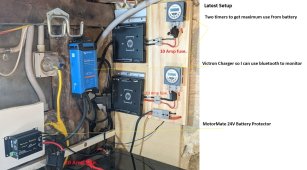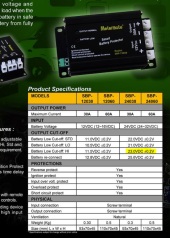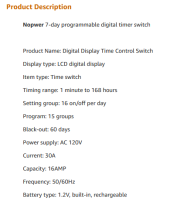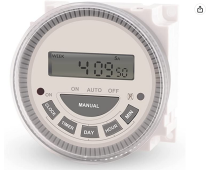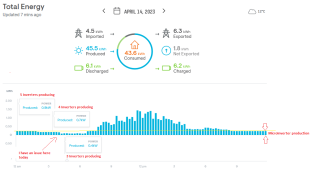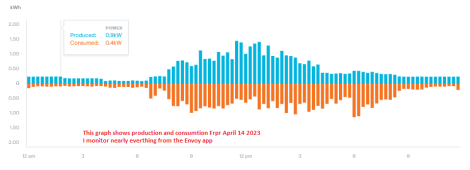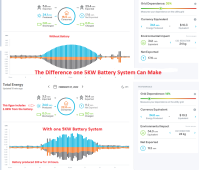My thought would be emulate the I-V curve of PV panel, varying the power available to microinverter.
If you found a DC/DC supply with CV/CC output, you could have a PID or other control loop varying CV setting with the goal of keeping a CT (x V) on utility connection around zero amps & watts.
But likely not cheap to get several hundred watt DC/DC supply. Custom designs would be used for a product like this, and for one-off experimenting it would be time consuming and likely expensive.
PWM between two voltage sources (battery and capacitor) would have repeated capacitor charging inrush. So an inductor and diode is used in a boost converter. Voltage difference and PWM duty ratio determines current draw.
Easier would be to have a bank of microinverters, and enable more/fewer of them.
For sure it would be much more simple to have a bank of inverters, but the reality is my overnight/background consumption is below that of even one microinverter if you look at the circled overnight area - the graph shows 5 days of my net power use - up is fed back to the grid, down is consumption from the grid.
The big use spikes are electric cooker/hob/microwave/kettle etc. I am not aiming to be able to cover those, i just want to reduce my background use to zero when i have sufficient solar stored. If you resolve the data a good half of my cost is attributable to this background use!
Now i've seen the inverter will run at lower power off a current limited PSU it must be possible.....I've ordered a PWM module to have a go with - it is supposedly capable of 15A but i should only need to go to 10 at most. It cost £10 including delivery so i'm not expecting miracles but it's worth a try. In terms of inrush current, when the cap is fully discharged (system off for a while) the inrush will be high so i may have to implement a soft start to save the PWM module, but when it's running the inrush should be small - the cap voltage will only have time to decay a small amount below Vbatt before it is recharged - the PWM unit is ~16kHz so plenty quick. The capacitor is hopefully acting more like a low pass filter to smooth the PWM out before it gets to the inverter....
This particular PWM module is also interesting to me because it has a 5v input for control which will work nicely with my arduino control system if i can get it working OK with the inverter.
I won't get the bits until the middle of next week at the earliest but i'll post again with an update whichever way it goes!






